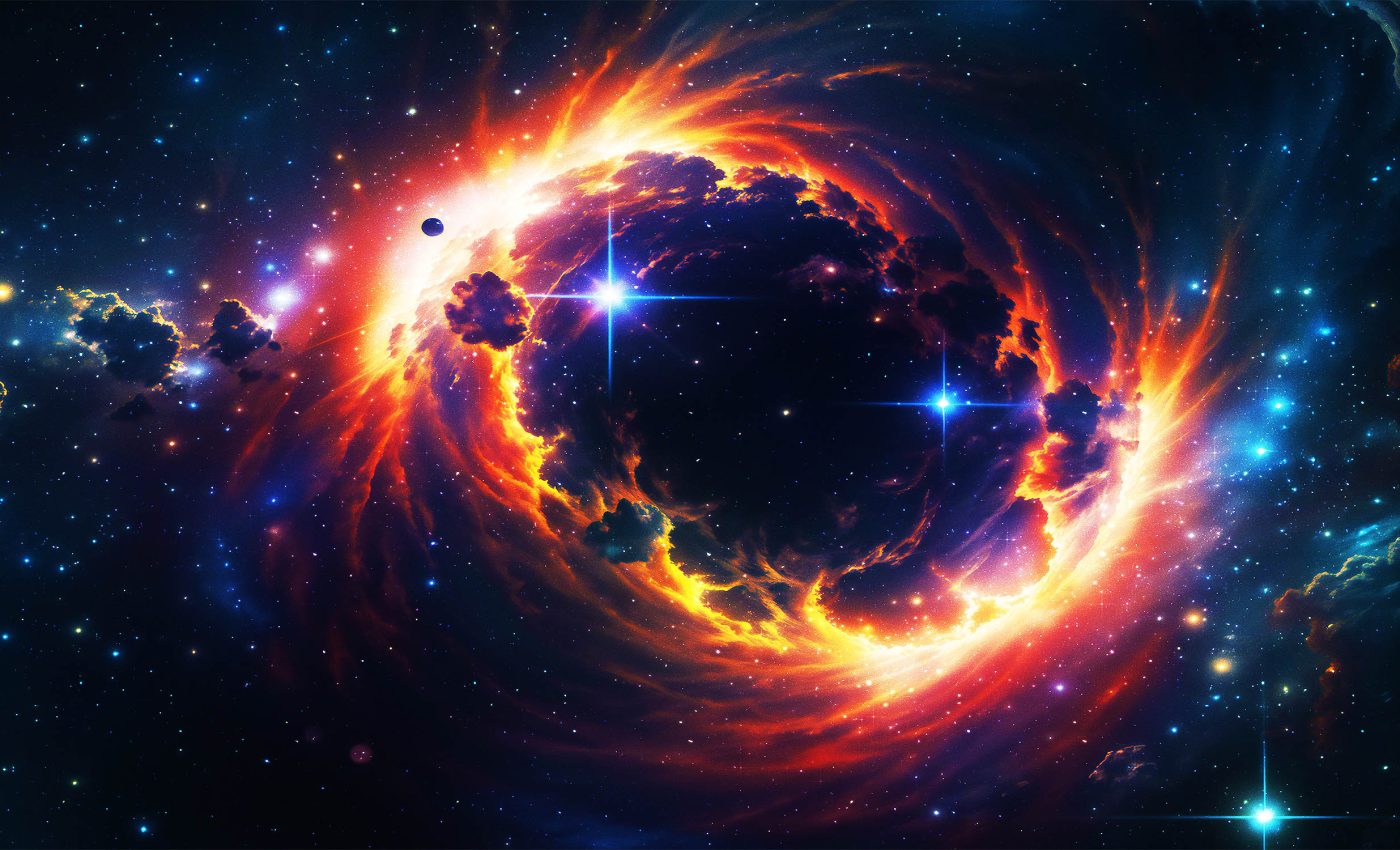
Untangling the dark matter 'conspiracy' with new high-tech tools
For more than 25 years, astronomers have grappled with a fascinating question: what lies behind the consistent density of matter observed in galaxies, regardless of their varying ages, sizes, and structures? More often than not, the answers circle back to stars and the enigmatic concept of dark matter.
This intriguing puzzle has consistently challenged prevailing theories of galaxy formation while suggesting a “conspiracy” between the visible matter we observe — like stars and gas — and the enigmatic dark matter that remains largely elusive.
Stars, dark matter, and galaxy density
Recent technological advancements and research, particularly the work of Dr. Caro Derkenne and her dedicated team, have provided more details about the intricate relationship between stars and dark matter.
Their findings are helping to decode the complexities of galactic density, ultimately reshaping our understanding of the universe.
Dr. Derkenne, an ASTRO 3D researcher from Macquarie University, and her international team have published their findings in the Monthly Notices of the Royal Astronomical Society, overturning the previous theory that dark matter and stars were somehow interacting in ways we couldn’t understand.
Their research involved detailed observations of 22 middle-aged galaxies, looking back four billion years into the past using the Very Large Telescope (VLT) in Chile.
Understanding dark matter
Dark matter is a theoretical substance that is believed by many to make up about 85% of the matter in the universe. It doesn’t emit, absorb, or reflect light, which is why it’s “dark.”
Because we can’t see dark matter directly, its mere existence is still up for debate in some scientific circles.
Most scientists assume it exists because of its gravitational effects on visible matter, like stars and galaxies.
Without dark matter, they posit, galaxies would fly apart because they don’t have enough visible mass to hold them together.
The so-called ‘conspiracy’
The original theory emerged because galaxies appeared to have a uniform density structure, despite their differences.
This suggested that stars and dark matter must be interacting in some unknown way. But no one could explain how this was happening. It was a mystery that stumped astronomers for decades.
“This homogeneity suggested that dark matter and stars must somehow compensate for each other in order to produce such regular mass structures,” says Dr. Caro Derkenne
Dr. Derkenne and her colleagues, however, have discovered that this supposed “conspiracy” might not be happening at all. Instead, the problem lies in how astronomers have been measuring and modeling galaxies.
Searching the stars for a dark matter link
The breakthrough came from the team’s use of the VLT, equipped with the Multi Unit Spectroscopic Explorer (MUSE).
This advanced tool allowed the team to analyze the galaxies in unprecedented detail, capturing the true diversity of galactic structures.
MUSE collects data cubes where each pixel represents a spectrum, giving a 3D view of the galaxy that was previously impossible to achieve.
These more complex models provided a clearer picture of the galaxies, showing that the previous uniformity observed in density was a result of oversimplified modeling rather than any mysterious interaction between stars and dark matter.
“In the past, people built simple models that had too many simplifications and assumptions,” says Dr. Derkenne. “Galaxies are complicated, and we have to model them with freedom or we’re going to measure the wrong things.”
“Our models ran on the OzStar supercomputer at Swinburne University, using the equivalent of about 8,000 hours of desktop computing time.”
Big tech and big data
This discovery has far-reaching implications for our understanding of galaxies and the universe. It challenges previous assumptions and opens the door to more accurate models of galactic formation and evolution.
Moreover, it highlights the importance of advanced tools and cutting-edge astronomical techniques.
“Astronomy sets you up really well to understand big data. The real world is messy, and we don’t always have all the data,” explains Dr. Derkenne.
“No one is there to tell you the answers or if you’re wrong or right. You need to accumulate data and analyze until you find something that works.”
Dr. Derkenne’s work is part of the broader MAGPI (Middle Ages Galaxy Properties with Integral field spectroscopy) survey, which aims to analyze the properties of galaxies during their middle ages.
The collaboration between Australian institutions and the European Southern Observatory has been crucial in making this research possible.
Next steps in galactic research
The findings from this study solve a long-standing problem in astronomy while demonstrating the potential for future research. The advanced techniques and collaborative efforts behind this project have laid the groundwork for young scientists to continue exploring the mysteries of the universe.
As Professor Emma Ryan-Weber, Director of ASTRO 3D, remarks, “The complex data from the ESO Very Large Telescope has not only solved a long-standing problem in astronomy, but also enabled young scientists, such as Dr. Caro Derkenne, a platform on which to launch their careers to solve real-world problems.”
This breakthrough in galactic research underscores the importance of continually challenging our assumptions and pushing the boundaries of scientific knowledge. With the tools and expertise now available, the future of astronomy looks brighter than ever.
The mystery of galaxy density might be solved, but there are countless other questions waiting to be answered. And as this research shows, the key to unlocking those answers lies in the combination of advanced technology, innovative thinking, and international collaboration.
The full study was published in the Monthly Notices of the Royal Astronomical Society.
—–
Like what you read? Subscribe to our newsletter for engaging articles, exclusive content, and the latest updates.
Check us out on EarthSnap, a free app brought to you by Eric Ralls and Earth.com.
—–













